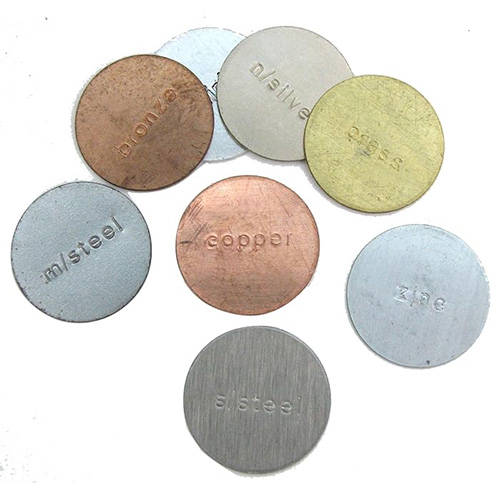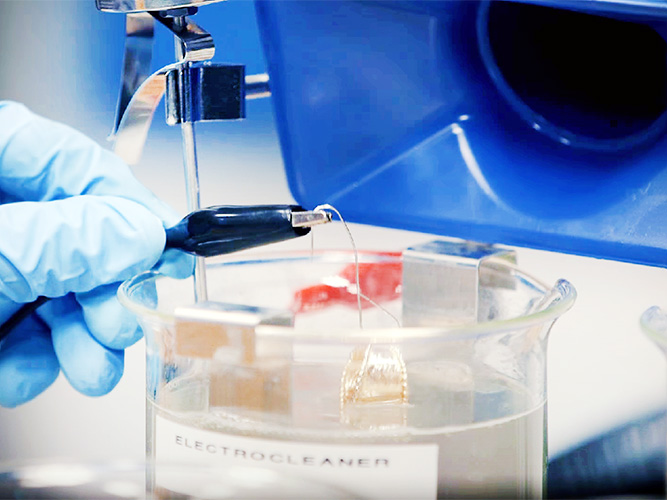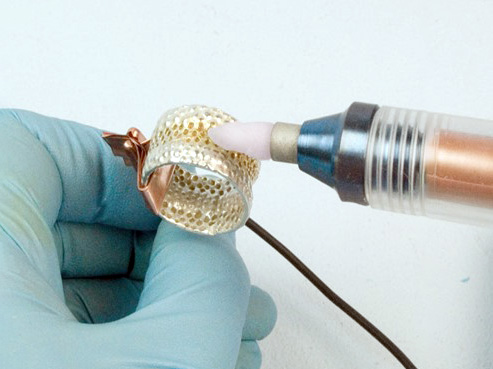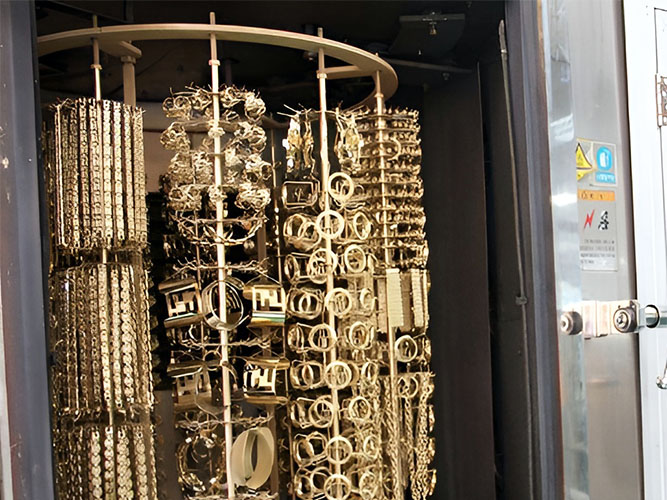Jewelry Knowledge
A guide to jewelry plating
Why plate jewelry?
There are a lot of reasons why jewelry plating is needed, it depends on the metal used and the outcome that is desired:
Affordability: This is the most common reason for plating jewelry with precious metals like gold or silver. A thin layer of precious metal is plated on a base metal which gives the piece the look and feel of solid gold or silver at a fraction of the cost. This makes if affordable for people who want their jewelry to look like a real gold or silver piece.
Durability: specific types of plating can increase the durability of the jewelry. E.g, white gold is plated with rhodium, which makes it resistant to scratches and less prone to discoloration. Similarly, silver plating can protect brass oxidation and losing its shine.
Aesthetics: Plating allows you to get a wider range of colors and designs than are possible with solid metals. You can get jewelry plated in rose gold, black, and many other colors, giving designers more flexibility to design jewelry and consumers more options to choose from.
Protection: In certain instances, plating is used to protect the base metal from corrosion or allergic reactions. E.g, gold-plated jewelry is less likely to cause skin irritation than unplated metal.
Plating materials
There are two materials that we need to be concerned with when it comes to plating. First one is the base metal which is the meal which will get plated on. The other is the plating material which we will be using to plate the base metal with.

Base metals
Both precious and non precious metals may be plated although it is much more common to see non precious metals get plated. Typical base metals that are used for plating include:
- Copper
- Brass
- Zinc alloy
- Nickel
- Stainless Steel
- Aluminum
- Gold
- Silver
Plating material and colors
Jewelry plating is done using various types of material to produce the desired look and characteristics
Plating with precious metals:
Gold: This metal is found in various colours like yellow, white, rose, and black, and is known for its elegance and longevity. It comes in different karats (purity levels) which makes it affordable and durable.
Silver: It is affordable and offers a classic, cool-toned look.
Platinum: This metal is rare and valuable, and is known for its extreme durability and hypoallergenic properties.
Plating with non-precious metals:
Rhodium: This is a white metal that is typically used to plate silver jewelry for more shine and resistance to losing its shine.
Ruthenium: A dark, grey metal used for a contemporary and industrial look. It has good durability and a hypoallergenic benefit.
Titanium: This metal is lightweight and extremely hypoallergenic, often used for medical-grade jewelry for sensitive skin.
Stainless Steel: very affordable and hypoallergenic which gives a modern, polished look. Often used in fashion jewelry.
Jewelry plating techniques

Electroplating: As taught in grade 8 physics, this is the most common method. The jewelry is charged electrically and submerged in a plating solution containing the desired metal ions. The electrical current attracts the metal ions to the jewelry surface, leaving a thin layer of plating on the base metal.

Pen plating: A pen-like device containing the plating solution is used to draw on base metals. This is used to plate to specific areas/ curves or to add intricate details.

Vacuum deposition: This is an advanced technique which is used for high-precision, high-quality plating in controlled environments. This method is less common due to the specialized equipment required and higher cost.
After plating
Rinsing: The jewelry is thoroughly rinsed to remove any residual plating solution.
Polishing: The jewelry is polished to get the desired shine and look. Depending on the plating material, further protective coatings are applied.
How to take care of plated jewelry?
Preventative Measures:
• Apply your cosmetics and lotions before putting on the jewelry. Chemicals in these products can ruin the shine of your plating. Let your cosmetics dry completely before adorning yourself with plated jewelry.
• Take off the jewelry before showering, swimming, and exercising. Water, chlorine, and sweat can damage the plating and make the beautiful shine go away faster.
• Avoid harsh chemicals and cleaning products. Keep your jewelry far away from bleach, detergent, and other harsh chemicals, as they can also ruin the plating.
• Store your jewelry properly. When not in use, store your plated pieces in a cool, dry place, ideally in a soft pouch or jewelry box to prevent scratches and exposure to humidity. Wrapping them with tissue paper is the best way to store them.
• Separate the pieces to avoid scratching. Storing different pieces together can cause them rub up against each other which will scratch and damage each other’s plating.
Cleaning and Maintenance:
• Wipe your jewelry with a soft, non-abrasive cloth: This will remove dust and dirt that can dull the shine. Microfiber clothes work especially well.
• For better cleaning, use a mild soap and water solution. Dilute a gentle soap in lukewarm water and dip your jewelry for a short period of time. Rinse thoroughly after dipping and dry completely with a soft cloth or tissue.
• Clean the delicate pieces with a soft toothbrush. Gently brush away dirt from hard-to-reach areas.
• Avoid harsh polishing clothes and jewelry cleaners. These can be harsh on your jewelry and damage the plating. Stick to gentle methods and mild solutions.
• Replate the pieces when necessary. Over long periods of time, even with proper care, the plating might wear off or fade. Consult a jeweler about replating your piece to restore the original shine.
How to revive plating (Replating)
Before you Replate:
Check how much damage has been induced. Inspect the jewelry for significant scratches, dents, or areas where the plating has completely worn off. Extensive damage will require professional repair before replating.
Identify the Base Metal. Knowing what base metal was used in the jewelry is crucial for choosing the correct plating method and materials. Contact the seller to know what base metal is used in the making of the jewelry or consult a jeweler for help.
Replating methods:
Seek a jeweler: For valuable pieces, complicated designs, or complex plating requirements, professional replating is required. Jewelers have the expertise, equipment, and high-quality plating solutions to achieve the results you are looking for.